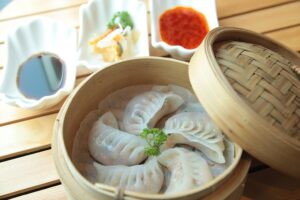The Chinese Cosmetics Market

The Chinese Cosmetics Market
In recent years, the demand of Chinese people for cosmetics and beauty products has significantly increased. This development coupled with the rise of e-commerce channels has caused China’s cosmetics industry to experience rapid development and growth. Currently, the Chinese cosmetics market is the second-largest in the world, lagging only behind the US.
Sales channels in the Chinese cosmetics market
Traditional sales channels in the Chinese cosmetics market include offline channels such as department stores, supermarkets and hypermarkets, and specialized cosmetics stores. In recent years, online B2C, C2C and other e-commerce channels have developed rapidly. Traditional channels have restrictions such as geographical restrictions, price restrictions, and other factors. Due to the lack of these restraints in e-commerce channels, the market share of these online channels is gradually growing. The market share of cosmetics e-commerce channels has grown from 5.3% in 2011 to 23.2% in 2017, and will continue to grow in the future.
Cruelty-free brands & cross border e-commerce
China has strict laws on imported cosmetics. Several products are required to be tested on animals before they can enter the Chinese market. Among the categories that require animal testing are: perfumes, skin care products, nail products, hair products, deodorants, sun protection products, and whitening products. In other words, brands that carry products in these categories are unable to set up shops in mainland China without first testing the products on animals. Therefore, many foreign “zero cruelty” cosmetics have no access to the offline channels in China.
For these cruelty-free brands, cross-border e-commerce is their ticket to enter the Chinese market. At the present. many foreign brands, such as American skin care brand Derma E, and Canadian skin care brand Cocoon Apothecary, have entered China through cross-border e-commerce.
To accelerate the import process of overseas commodities the Chinese ministry of commerce released a “positive list” of 1,142 items in April 2016. Included on this list are cosmetics which can be sold in China through cross-border e-commerce channels, such as T-mall international, Little Red book and JD International. On the one hand, there are no strict restrictions and policies on selling through cross-border e-commerce platforms. On the other hand, online channels are not always easy to set up and it is difficult satisfy consumers in all regions.
Especially for smaller beauty brands it has long been a dilemma: they want to enter in the Chinese market, however their scale and brand effect cannot compete with the key players in the Chinese cosmetics market, such as L’Oréal and Shiseido. The risks and costs of taking the first step are extremely high, which deters them from entering the market.
Trends in the Chinese cosmetics market
1. Continuous growth
An important driver for market growth is official incentives by the government. In July 2017, the Chinese government reduced the import tariff on most cosmetics from a 8.4% import tariff to a 2.9% tariff. This not only stimulates consumer spending through lower prices, but also encourages more international brands to enter the Chinese market. In addition, the per capita consumption of cosmetics in developed countries is about 4 times the consumption level in China. This indicates that the Chinese cosmetics market is relatively small. In other words, there is still much room for development and growth in China’s cosmetics market.
2. The rise of niche brands
According to the official data of T-mall international, a subsidiary of Alibaba, foreign niche brands account for a vast majority of the growth in sales of cosmetic products. More and more of the best-selling products on the platform are from brands that are relatively unknown in China. Especially the younger generation in China wants more personalized consumption, and they are willing to try various new products and concepts. Furthermore, thanks to sharing on social media platforms, such as Wechat and Weibo, many niche brands are receiving attention by Chinese consumers. If you want to find out more about Chinese social media, then read our article on this topic.
3. The emergence of intelligent instruments and tools
Thanks to the rapid development of technologies such as artificial intelligence (AI), virtual reality (VR) and augmented reality (AR), the Chinese cosmetics industry is witnessing a trend in the use intelligent technology. The aforementioned technologies are used to better market cosmetic products to their customers. For example, customers can try how makeup looks without actually having to apply the product, through the use of AR technology.
In addition, there has been an emergence of intelligent cosmetic instruments and tools. This has impacted how consumers use cosmetic products. For an increasing amount of Chinese women, a skincare routine is no longer limited to the application of creams to the face. Instead, they are turning to intelligent tools to improve their appearance. In the future it is expected that more and more intelligent beauty makeup instruments and portable tools will enter the daily life of Chinese women.
The Chinese cosmetics market is growing at a fast pace, and with the convenience of e-commerce, the demand for diversification and individualization of products, and the hidden, but increasing, consumer power in lower-tier cities, China’s cosmetics market is set to become the world’s largest one. If you are interested in doing business in China and you want to know more about the market you operate in, feel free to contact us!
Related posts





